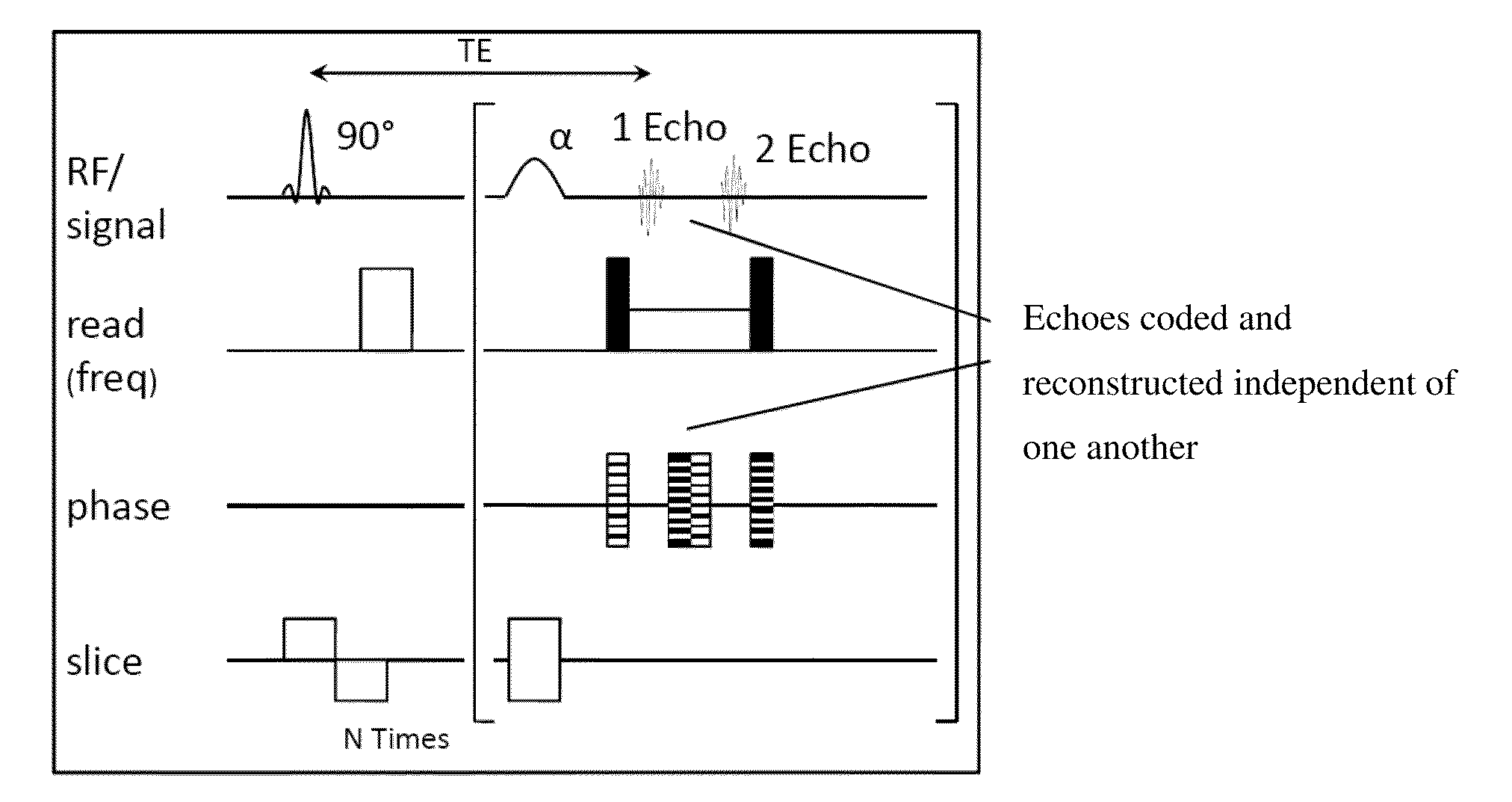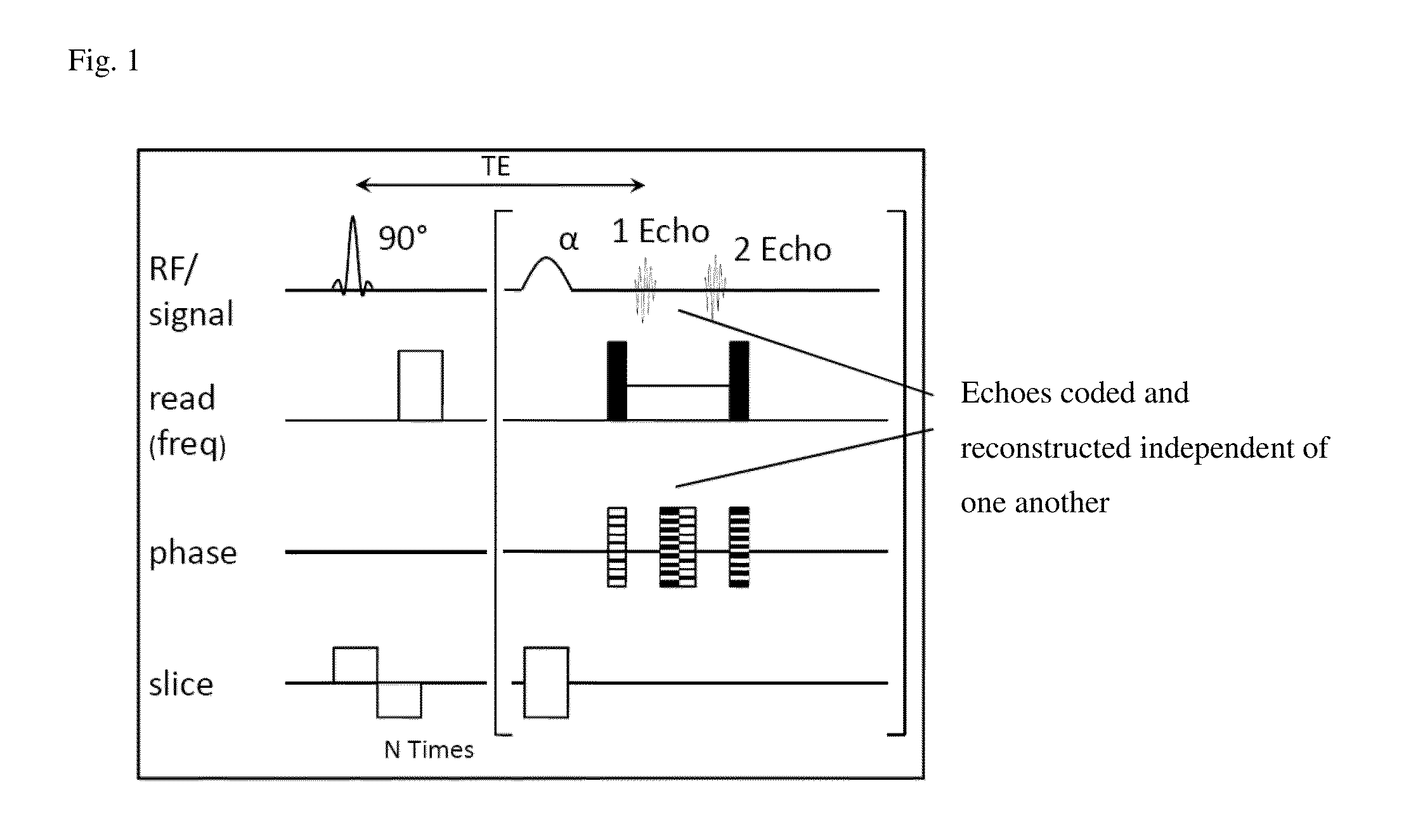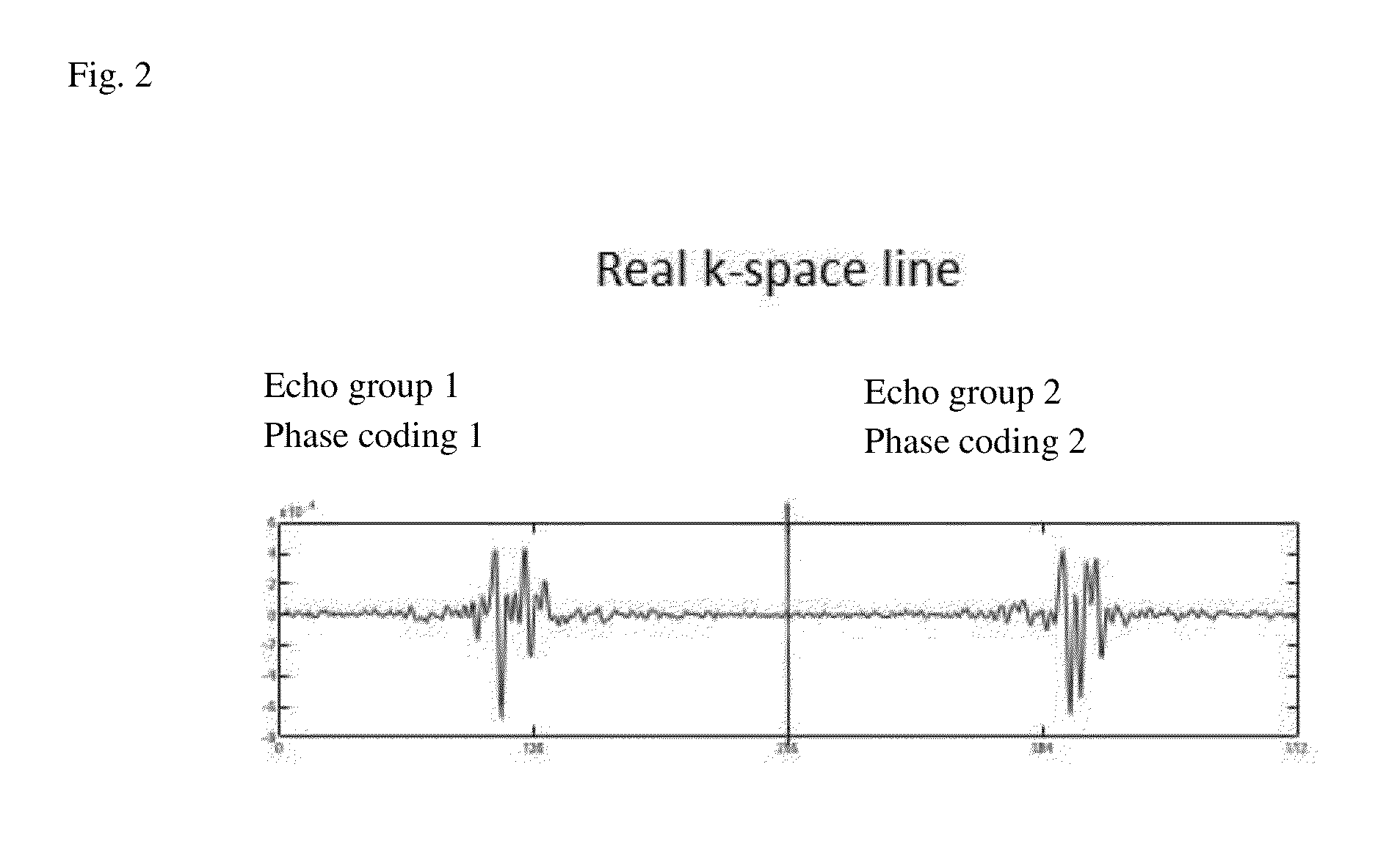Method for fast spin-echo MRT imaging
a mrt imaging and fast technology, applied in the field of fast spinecho mrt imaging, can solve the problems of reducing the degree of effectiveness or efficiency of image recording, reducing the time loss of training data, and requiring correction of fold artifacts
- Summary
- Abstract
- Description
- Claims
- Application Information
AI Technical Summary
Benefits of technology
Problems solved by technology
Method used
Image
Examples
example 1
[0097]As exemplary embodiment, the autocalibrated split-echo approach (SCSE FSE) is listed in a preferred embodiment. In this connection, Echo 1 functions as the reference data set, with which the intensity profile of HF coil arrays can be determined. Echo group 2 functions as a subsampled data set. The data set from echo group 2 can be unfolded and reconstructed using the reference data from echo group 1.
[0098]For implementation, independent gradients along the phase coding direction are generated, to separate even and odd echo groups and to code them independent of one another. One echo group serves for the reference map (see FIG. 3). Therefore an external reference scan becomes superfluous. The other echo group serves as the subsampled data set (see FIG. 4). This is unfolded using the reference map. FIG. 5 shows a completely reconstructed image.
[0099]The SCSE-FSE sequence was successfully implemented using acceleration factors of up to R=4. Higher acceleration factors can also be...
example 2
Heart Data Set for Autocalibrated Split-Echo Fast Spin-Echo Imaging
[0100]In the following, a split-echo is reconstructed using the example of the heart. In the reconstruction of the conventional SENSE algorithm, interference patterns that can be seen in the image occur as the result of the offset of the echoes in every k-space line. By means of processing of the raw data, it is possible to separate the echoes in the center of every k-space line. One data set serves as a reference map. The 32 individual coil images have a resolution of 270×256 pixels. The other data set serves for a reduced FOV. After the FOV data set was interpolated, both data sets pass through the algorithm (SENSE reconstruction). The resulting image has a resolution of 270×256 pixels. In this way, it was possible to reconstruct an image without folding artifacts.
[0101]For the SENSE reconstruction, the reference map is generated at the same time with the data set to be reconstructed. The two data sets contain dif...
example 3
[0102]An autocalibrated split-echo FSE technique with the following data was implemented:
[0103]Matrix size=512×526
[0104]Echo plus train length: 16
[0105]Number of dummy echoes: 8
[0106]in-plane resolution: (1.3×1.3) mm2
[0107]Slice thickness: 5 mm
[0108]TE: 67 ms
[0109]Repetition time (Time to Repetition=TR): 1 RR interval
[0110]Time between individual 180° refocusing pulses: 4.19 ms
[0111]Bandwidth±673 Hz / pixel
[0112]By means of additional gradients along the reading direction, even and odd echo groups were separated. The two echo groups were phase-coded differently. With one echo group, reference scans were drawn up, to generate a sensitivity map for the coils. This approach therefore requires no external reference scans and can therefore be referred to as autocalibrating. The second echo group was used to generate a subsampled data set. Acceleration factors from R=2 to R=4 were used. The SCSE-FSE imaging module was [word / words missing] with double IR (double inversion recovery) for supp...
PUM
 Login to View More
Login to View More Abstract
Description
Claims
Application Information
 Login to View More
Login to View More - R&D
- Intellectual Property
- Life Sciences
- Materials
- Tech Scout
- Unparalleled Data Quality
- Higher Quality Content
- 60% Fewer Hallucinations
Browse by: Latest US Patents, China's latest patents, Technical Efficacy Thesaurus, Application Domain, Technology Topic, Popular Technical Reports.
© 2025 PatSnap. All rights reserved.Legal|Privacy policy|Modern Slavery Act Transparency Statement|Sitemap|About US| Contact US: help@patsnap.com



